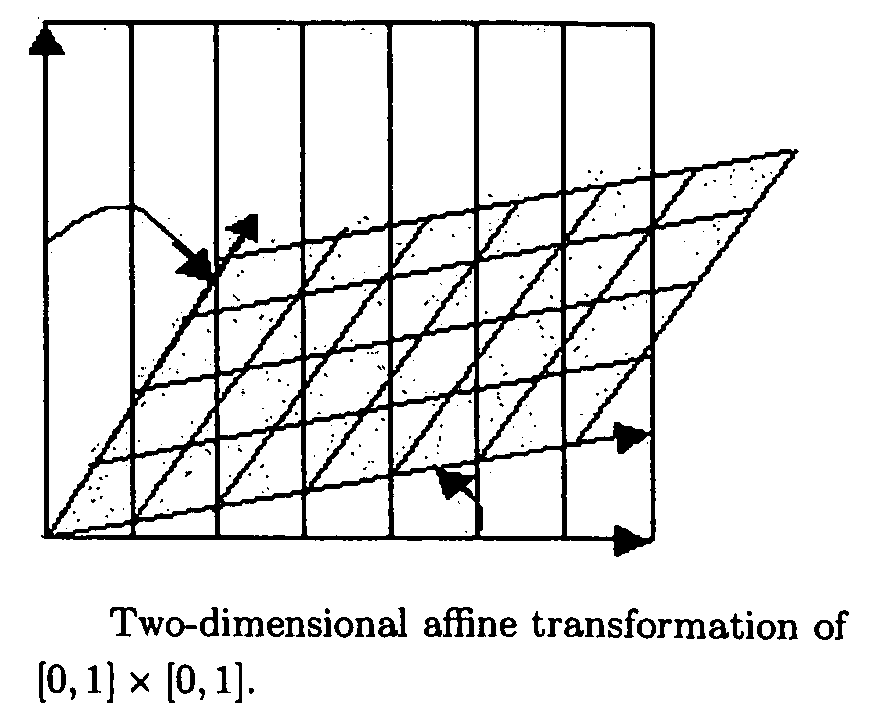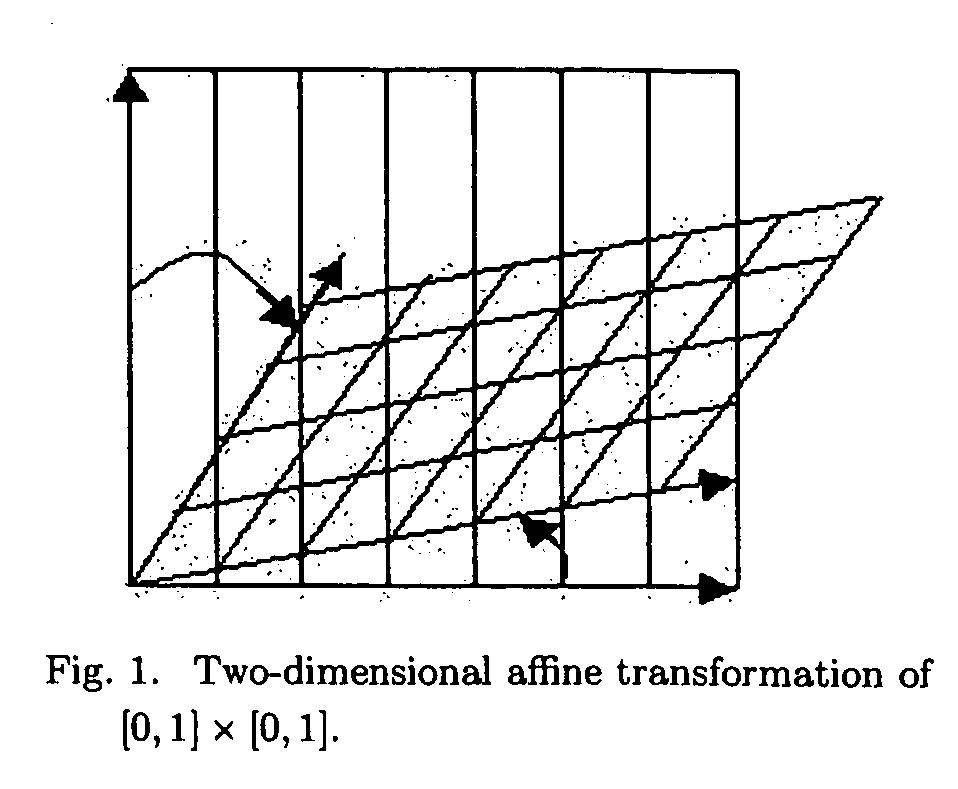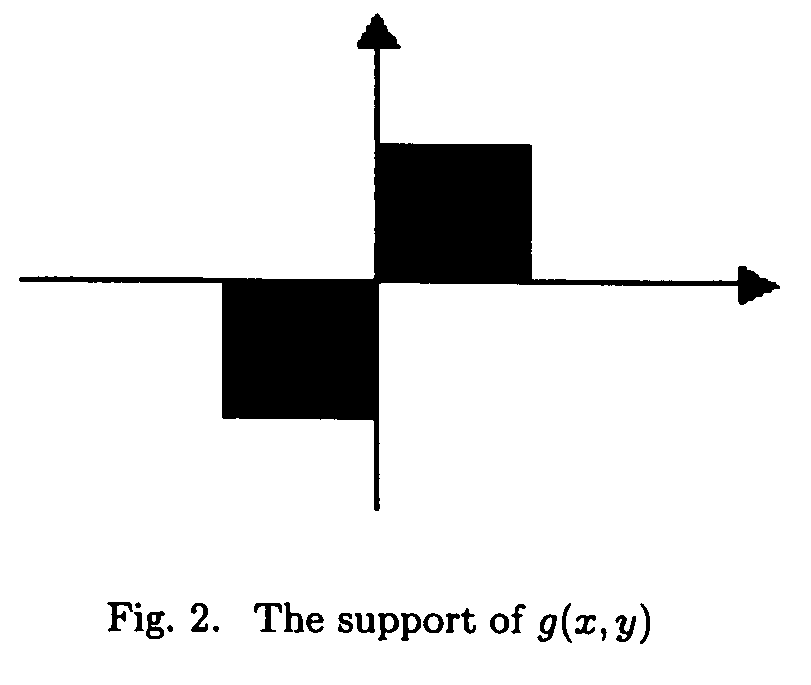Parametric estimation of multi-dimensional homeomorphic transformations
- Summary
- Abstract
- Description
- Claims
- Application Information
AI Technical Summary
Benefits of technology
Problems solved by technology
Method used
Image
Examples
example
[0104] Consider the case where wp(x)=xp. In this case
hp(x)≈gp(Ax)+pη(x)gp−1(Ax) (61)
and the error term in the “moment” equation, (57) becomes ɛ_p,k8=p∫Rn xkη(x)gp-1(Ax)p=1,… ,P(62)
The (r,s) element of the P×P dimensional, (k,l) block of Γ, denoted Γk,l is given by Γk,l(r,s)=rsE[∫Rn xkη(x)gr-1(Ax)∫Rn zl ⅆη(z)gs-1(Az)]=σ2rs∫Rn xkxlgr+s-2(Ax)=σ2rsA-1∫Rn [(A-1)ky][(A-1)ly]gr+s-2(y)=σ2rsA-1∑i=1n ∑j=1n qkiqlj∫Rn yiyjgr+s-2(y)(63)
and (60) becomes in this special case ui,j=(∫Rn yiyj1supp(g(y))2∫Rn yiyjg(y)…P∫Rn yiyjgP-1(y)⋮⋰ ⋮P∫Rn yiyjgP-1(y)2P∫Rn yiyjgP(y)…P2∫Rn yiyjg2P-2(y))(64)
9. Maximum Likelihood Estimation of the Affine Transformation Parameters
[0105] As we demonstrate in the next section, the LS algorithm for estimating the affine transformation parameters is accurate and computationally simple as it requires only the solution of a set of linear equations. In particular there is no need for an i...
PUM
 Login to View More
Login to View More Abstract
Description
Claims
Application Information
 Login to View More
Login to View More - R&D
- Intellectual Property
- Life Sciences
- Materials
- Tech Scout
- Unparalleled Data Quality
- Higher Quality Content
- 60% Fewer Hallucinations
Browse by: Latest US Patents, China's latest patents, Technical Efficacy Thesaurus, Application Domain, Technology Topic, Popular Technical Reports.
© 2025 PatSnap. All rights reserved.Legal|Privacy policy|Modern Slavery Act Transparency Statement|Sitemap|About US| Contact US: help@patsnap.com



